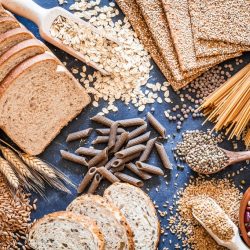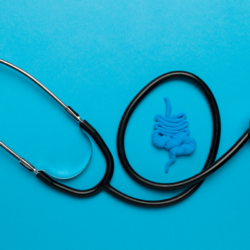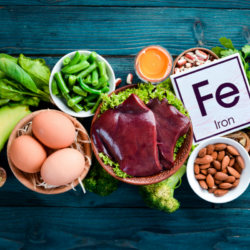The movement towards a more sustainable diet is booming, and flexitarianism is leading the way. This balanced approach to eating involves cutting back on meat. But you don’t have to cut out your favourite dishes. Not only does it help protect the environment, it can also improve your health and enhance your well-being. In this article, we’ll explore the benefits of flexitarianism and how you can adopt it into your daily life.
The flexitarian diet in a nutshell
Flexitarianism originated in the 1990s in the United States. The term is a combination of the words ” flexible ” and ” vegetarian “. So it’s a diet that involves following a vegetarian or vegan diet in moderation. In other words, a flexitarian will considerably reduce his or her meat consumption while continuing to eat it occasionally. There are currently 3 types of flexitarianism:
- Partial: where meat is included in the daily diet, but in moderation (2 to 3 times a week)
- Specialised: where meat or one category of meat is eaten less frequently
- Total: meat is not included in the daily diet. It is eaten occasionally.
Current trends and health benefits
The growing interest in flexitarianism is in line with current trends, particularly among young adults. This adoption is motivated by a desire to improve health and reduce environmental impact. These motivations reflect a conscious choice and an assumption of responsibility for our food and our planet. (4)(5)
A recent study highlighted the diversity of vegetarian diets and analysed the socio-demographic profiles of those who follow them. It found an interesting correlation between these diets and a reduction in cardiovascular risk factors, confirming flexitarianism as a lifestyle choice that is beneficial to health. (6)
Economic and nutritional aspects of flexitarianism
It is also essential to stress that flexitarians differ from vegans, lacto-ovo vegetarians and omnivores. Research indicates that flexitarians could benefit from positive health impacts from a dietary model that limits meat consumption, while warning of possible negative implications if the diet is not well balanced. (7)
The economic aspect should not be overlooked. One study presented comparable estimates of diet costs for a standardised set of healthy and sustainable diets, including flexitarianism, in many countries. This data could be crucial for people concerned about the cost of food and its accessibility. (8)
There is also evidence that moderate integration of red meat into an otherwise vegetarian diet can have a positive impact on biomarkers of sustainable health, highlighting the nutritional balance and long-term benefits of flexitarianism. (9)
However, there is a data gap regarding the nutritional status of flexitarians. Current research suggests the need for particular attention to nutritional intakes to avoid deficiencies and maximise health benefits. (10)
Food motivations and experiences of flexitarians
The motivations behind the choice of flexitarianism among young adults are diverse and include concerns about health, dietary variety and cost, as well as environmental and ethical considerations. These motivations show that flexitarianism is more than just a diet, it is a global approach incorporating personal and altruistic values. (11)
Finally, people’s eating experiences differ depending on whether they follow a flexitarian, vegetarian or exclusively plant-based diet. This diversity of adherence and dietary behaviour enriches the debate on the best way to eat and highlights the flexibility of flexitarianism as a viable and adaptable diet. (12)
What are the benefits of flexitarianism?
There are a number of reasons why it may be worth adopting the flexitarian diet:
- Healthbenefits: Flexitarianism can help improve health by limiting consumption of red meat, which is associated with an increased risk of heart disease and certain types of cancer. By eating more fibre, vegetables, fruit, whole grains and plant proteins, flexitarians can improve their overall health.
- Environmental impact: Meat production is one of the most polluting industries in the world. By reducing meat consumption, flexitarians can reduce their environmental impact in terms of greenhouse gas emissions, water consumption and deforestation.
- Greater dietary flexibility: Unlike other restrictive diets, flexitarianism allows people to eat a variety of foods, including animal products, while limiting meat consumption. This may be easier for some people to adopt than strict vegetarian or vegan diets.
- Economical: By reducing meat consumption, flexitarians can save money on their food budget, as vegetarian foods are often cheaper than meat.
The health benefits associated with the flexitarian diet are numerous. By reducing consumption of red meat and other animal products, this diet can help reduce the risk of cardiovascular disease and other health problems associated with a diet high in saturated fats. What’s more, by favouring fruit and vegetables, flexitarians benefit from a diet rich in antioxidants, vitamins and minerals, which can boost their immune system and promote better overall health.
Flexitarianism and proteins
The flexitarian diet, often referred to simply as ‘flexitarianism’, is an increasingly popular way of eating. It lies somewhere between the vegetarian diet and the traditional omnivorous diet. Followers of the flexitarian diet choose to reduce their consumption of meat and fish, while incorporating more plant-based products into their diet.
Compared with a strict vegetarian diet, the flexitarian diet allows occasional consumption of animal products, such as dairy products, eggs and fish. This offers greater flexibility to people who wish to adopt a predominantly vegetarian diet while maintaining certain aspects of their usual diet.
Protein plays a crucial role in the diet, and flexitarians make sure they get enough protein, whether from animal or plant sources. Plant proteins, such as legumes, nuts and seeds, are an important part of the flexitarian diet. They provide a healthy alternative to animal proteins and are often rich in fibre and essential nutrients.
How do I become a flexitarian?
Adopting a flexitarian diet can be easy if you take several key aspects into account. Firstly, it’s important to familiarise yourself with the basic principles of the diet and the foods to include and exclude. Next, planning meals accordingly is crucial to include a variety of healthy foods, such as vegetables, fruit, whole grains and plant-based proteins. It’s also important to be creative when preparing meals by using new vegetarian ingredients to replace meat (By the way, have you read our article on plant milks or soya protein? ).
It’s essential to limit your consumption of red meat and increase your intake of plant proteins. What’s more, you need to make sure you get the right balance of nutrients at every meal to ensure a healthy, balanced diet. Finally, we advise you to be flexible and patient when adopting a new diet, taking the time needed to find the foods and preparations that best suit your tastes and lifestyle.
Guide to transitioning to a flexitarian diet
The transition to a flexitarian diet is a process that can be both rewarding and tricky. The aim is to gradually reduce meat consumption, while discovering the richness of plant-based foods. Here’s a step-by-step guide to help you gently adopt this more flexible and environmentally-friendly way of eating.
Step 1: Define your objectives
Start by identifying your reasons for becoming a flexitarian. Is it for health, environmental or ethical reasons? Defining your motivations will help you stay focused and committed to your transition.
Step 2: Inform yourself
Find out about the basic principles of nutrition to ensure a balanced intake of proteins, vitamins and other essential nutrients. This will help you to replace animal products with plant-based alternatives.
Step 3: Startsmall
Introduce vegetarian days into your week. For example, start with a “Meat-free Monday” and gradually increase the number of meat-free days over time.
Step 4: Discover New Foods
Experiment with plant-based proteins such as lentils, chickpeas, tofu and tempeh. Try different plant-based preparations to find out which you prefer.
Step 5: Reinvent your favourite recipes
Modify your favourite dishes by replacing meat ingredients with vegetables or pulses. For example, use chopped mushrooms or nuts instead of minced meat.
Step 6: Make Gradual Substitutions
Reduce the amount of meat in your recipes and increase the proportion of vegetables and wholegrain cereals. For example, replace half the meat in a chilli with kidney beans.
Step 7: Listen to your body
Pay attention to your body’s signals. If you feel tired or weak, you may need to adjust your iron or protein intake. Don’t hesitate to consult a nutritionist for personalised advice.
Step 8: Be patient and forgiving of yourself
The transition can take time, and it’s normal to encounter obstacles. Be easy on yourself if you eat meat more often than you should. Flexitarianism is flexible by nature and allows for adjustments according to your needs and situations.
By following these steps, you can gradually adopt a flexitarian diet and enjoy its many health and environmental benefits.
Flexitarian menu ideas
To create a balanced flexitarian menu, it’s important to consult nutrition professionals to ensure that meals are not only tasty, but also nutritious. Here’s an example of a weekly flexitarian menu, based on the recommendations of Dr Franck Gigon, co-author of La méthode flexitarienne. (13)
| Day | Breakfast | Lunch | Dinner |
|---|---|---|---|
| Monday | Oatmeal, fresh fruit, organic plant milk | Grilled chicken, brown rice, soya yoghurt and apple | Green salad with walnuts, toasted black bread |
| Tuesday | Toasted brown bread, vegetable butter, honey/jam | Lentil and feta salad, buckwheat pancakes | Vegetable soup, olive focaccia |
| Wednesday | Organic muesli, chopped nuts, fresh fruit | Wok of vegetables and marinated tofu, honey yoghurt | Sweet potato salad, hummus and black grapes |
| Thursday | Oatmeal, fresh fruit, organic plant milk | Grilled trout, carrots, broccoli, nut bread | Sweet potato tagine, pita bread |
| Friday | Toasted dark bread, organic vegetable butter, honey/jam | Spinach salad, hummus, fruit compote | Couscous with almonds and oranges |
| Saturday | Organic soya yoghurt, chopped nuts, fresh fruit | Quinoa, roasted carrots, eggs, wholemeal bread | Vegetable soup, black bread, prunes |
| Sunday | Organic muesli, fresh fruit, organic plant milk | Wholemeal rice, prawns, green vegetables | Green salad with nuts, grapefruit, soya yoghurt |
This table provides a practical, easy-to-follow overview for each day of the week, with varied and balanced breakfast, lunch and dinner options based on the principles of the flexitarian diet.
Source:
- https://www.ncbi.nlm.nih.gov/pmc/articles/PMC5216044/
- https://www.ncbi.nlm.nih.gov/pmc/articles/PMC4698595/
- https://www.ncbi.nlm.nih.gov/pmc/articles/PMC6089671/
- https://www.ncbi.nlm.nih.gov/pmc/articles/PMC5216044/
- https://www.ncbi.nlm.nih.gov/pmc/articles/PMC8734916/
- https://www.ncbi.nlm.nih.gov/pmc/articles/PMC7525113/
- https://www.ncbi.nlm.nih.gov/pmc/articles/PMC6048256/
- https://www.ncbi.nlm.nih.gov/pmc/articles/PMC8581186/
- https://pubmed.ncbi.nlm.nih.gov/34931994/
- https://pubmed.ncbi.nlm.nih.gov/38017527/
- https://pubmed.ncbi.nlm.nih.gov/33359236/
- https://pubmed.ncbi.nlm.nih.gov/37388633/
- https://www.topsante.com/nutrition-et-recettes/regimes-alimentaires/autres-regimes-alimentaires/regime-flexitarien-7-jours-de-menus-632237





